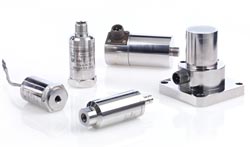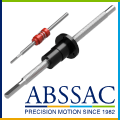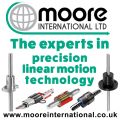
Posted to News on 21st Aug 2013, 15:54
Cost-effective vibration monitoring for smaller plant
Russell King, Managing Director of Sensonics, discusses how vibration monitoring can be implemented cost-effectively even on smaller plant such as pumps and fans, and introduces his company's VEL/GDC electro-dynamic transducer.

Vibration transmitters based on piezoelectric technology are commonly used throughout industry for the monitoring and protection of smaller critical rotating plant, such as fans and pumps. For more expensive assets - including steam and gas turbines, centrifugal pumps and compressors - rack-based systems are standard because they offer the required levels of flexibility in measurement. However, the higher cost of these more sophisticated systems is difficult to justify for smaller items of rotating plant operating in less critical applications. To keep costs down, sensors with a direct connection via a 4-20mA current loop are very attractive. Furthermore, the inevitable demand to improve operating efficiencies, reduce energy consumption and eliminate downtime is likely to have an impact on all manufacturing systems and components, regardless of their size or value.
Cost-effective sensing
Condition monitoring specialist Sensonics has been working with industry for over 20 years supplying such devices, although matching this type of product to the application is not always straightforward. The following article outlines the key points to be considered and the problems that can be encountered in such applications.
The majority of absolute vibration transmitters available today utilise a standard piezoelectric compression technique coupled with electronics in the sensor to convert the measured acceleration to a vibration velocity signal. The sensor acts as a current sink in the circuit loop to the PLC or DCS, providing a fixed range of vibration (mm/s or ips) with a 4-20mA current loop. The advantage of this approach is that no other power is required for the sensor, so a single cable pair can be used from the connecting system to the machine without any intermediate electronics (unless the machine is located in a hazardous zone where safety barriers would be mandatory). Typical requirements for vibration measurement are in the frequency range of 10Hz to 1kHz, with a vibration range of 20mm/s to 50mm/s rms, covering machinery running at speeds between 500RPM and 3000RPM.
However, while the sensor is simply mounted on the machine bearing case and connected to the current loop, there are several important areas of consideration. These include the earthing regime, low-frequency vibration and high acceleration noise, which can lead to measurement error and spurious machine shutdown in protection applications, resulting in expensive downtime.
Earthing and grounding issues are where the majority of problems occur in new installations, particularly in heavy industry where power usage is high and effective earthing regimes are difficult to achieve. Typical vibration transmitters are single-case devices, therefore the sensitive piezoelectric element is effectively shielded at the same potential as the machine to which the transducer is mounted. The internal sensor arrangement relies on a circuit with a very high impedance to extract the charge from the ceramic sensor; with limited isolation to the external case, pick-up from a noisy earth is therefore unavoidable and can appear on the output as an unstable current reading. This is because at the connecting system end the transducer low is usually connected through a terminating resistor to a different, normally cleaner, ground point that offers no common-mode advantage. If the transducer low could be connected to ground at the system end (which is rarely available in PLCs) there is the option to ground to the machine, which effectively provides the required common-mode rejection. However, this is against best practice and could result in large current flows in the sensor cables due to the potential differences identified with the initial problem.
It is possible to electrically isolate the transducer from the machine using a special mounting stud to prevent such electrical pick up, but care must be taken because any connection on the cable oversheath to the machine will negate this effect. Worse still, the device becomes case-sensitive to human interference, producing a measurement spike when touched, even though the resistance path to earth is relatively high. One practical method utilised on sites to reduce this effect has been the installation of a galvanic isolator or current repeater between the sensor on the machine and the connecting system. This has the effect of terminating the sensor 4-20mA circuit with a common earth and repeating the current onto the connecting system earth regime with no continued interference.
Spurious frequency affects
While the transducer is normally utilised on the main drive train bearings, other mechanical systems on the machine (such as an oil pump, for example) can interfere with the measurement. Fundamentally the sensor element is an accelerometer with a wide bandwidth of measurement (beyond 10kHz); auxiliary systems running at higher speeds can generate high-acceleration vibration at high frequencies (20 'g' at 1kHz, for example). These represent a very small vibration displacement (few um) but have a large impact on the transducer as the high-charge output from the piezo-ceramic material causes saturation in the integration circuitry and subsequently an erroneous reading.
This can be overcome by specifically designing the transducer with additional filtering to remove the unwanted signal and to prevent the saturation. However, only minimal attenuation can be accomplished due to the size and power constraints of the sensor configuration. One other solution to this problem is to specify a mechanical mounting filter between the machine and the sensor that can provide large attenuation close to the wanted frequency band - but this is usually prohibitively expensive.
The sensors' primary purpose is to measure vibration at the machine running speed, typically in the range of 10Hz to 50Hz. To avoid spurious readings it is important that there are no low-frequency structural movements (
Sensors and monitoring systems
Having described some of the application pitfalls associated with the absolute vibration transmitter, sometimes the only solution is a standard accelerometer connected to a monitoring system. This has the flexibility to select an appropriate transducer (ie double-screened), the measurement type, range and filtering to optimise the vibration channel to the application.
Sensonics has recognised the need for a sensor that can meet with heavy industrial demands and can be utilised on a wide range of plant with reduced sensitivity to auxiliary systems.
The Sensonics VEL/GDC is a electro-dynamic sensor providing a 4-20mA current sink output proportional to velocity vibration and offers the advantage of double isolation in conjunction with a low-impedance circuit, making it suitable for high-noise environments. Due to the electro-dynamic nature of the sensor assembly, both high- and low-frequency events are filtered mechanically and, since no integration is required, the arrangement is immune to the saturation seen in piezoelectric devices.

The diagram above illustrates the application range of the VEL/GDC compared with a standard piezoelectric device, providing users with assurance of suitability across broad range of applications.
A typical specification of the VEL/GDC is detailed below. The transducer provides the added advantage of a buffered velocity vibration raw signal for connection of third-party monitoring systems should further vibration analysis be required.
- Operating Voltage: 15 to 35 volts DC
- Output signal: 4-20mA sink proportional to output range
- Output ranges: 0-15mm/s, 20mm/s, 25mm/s and 50mm/s
- Accuracy: +/-2 per cent
- Frequency Range: 8Hz to 2kHz (1dB), 4Hz (3dB)
- Dynamic Output: Sensitivity 20mV/mm/s
Follow the links to find out more about the Sensonics VEL/GDC electro-dynamic sensor and to contact Sensonics for application advice.

































